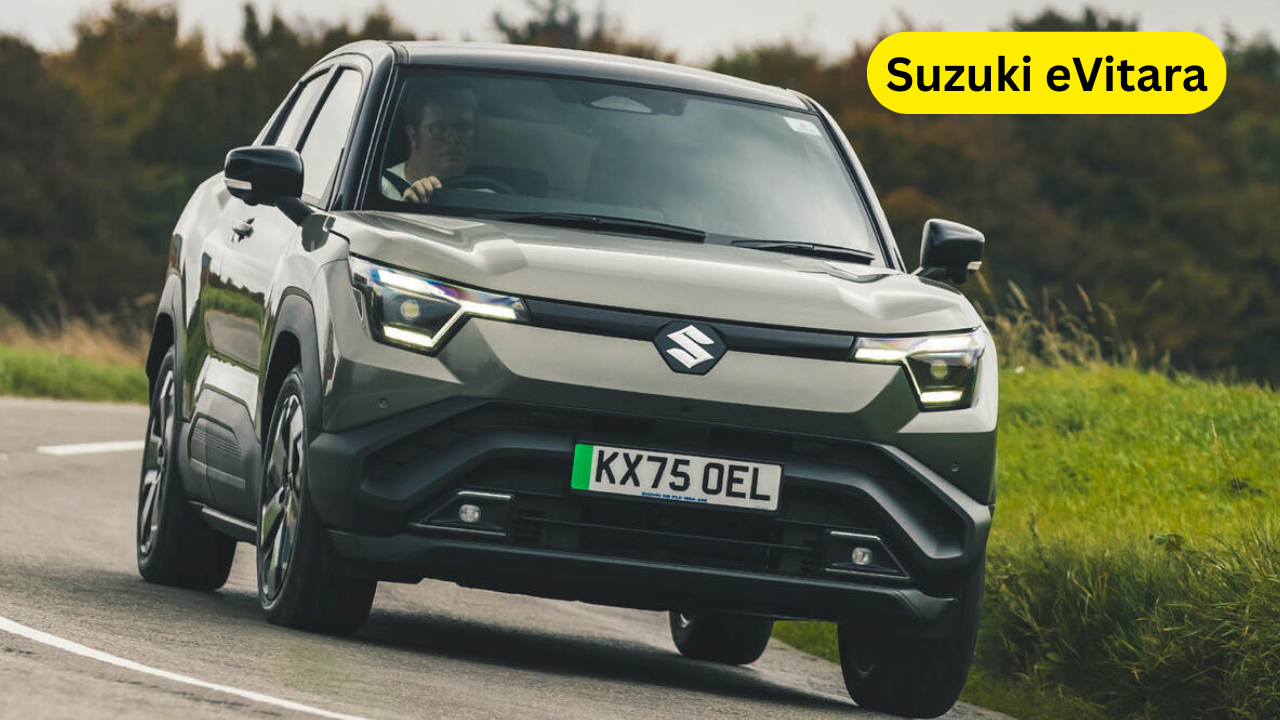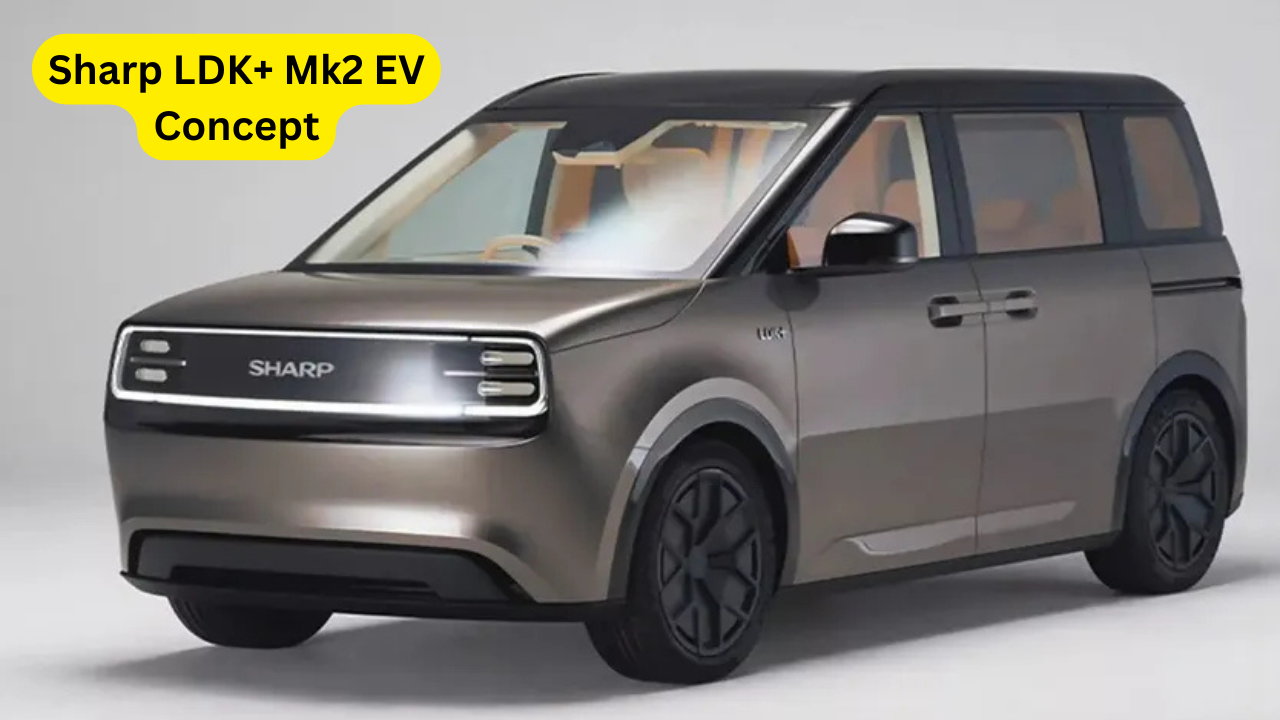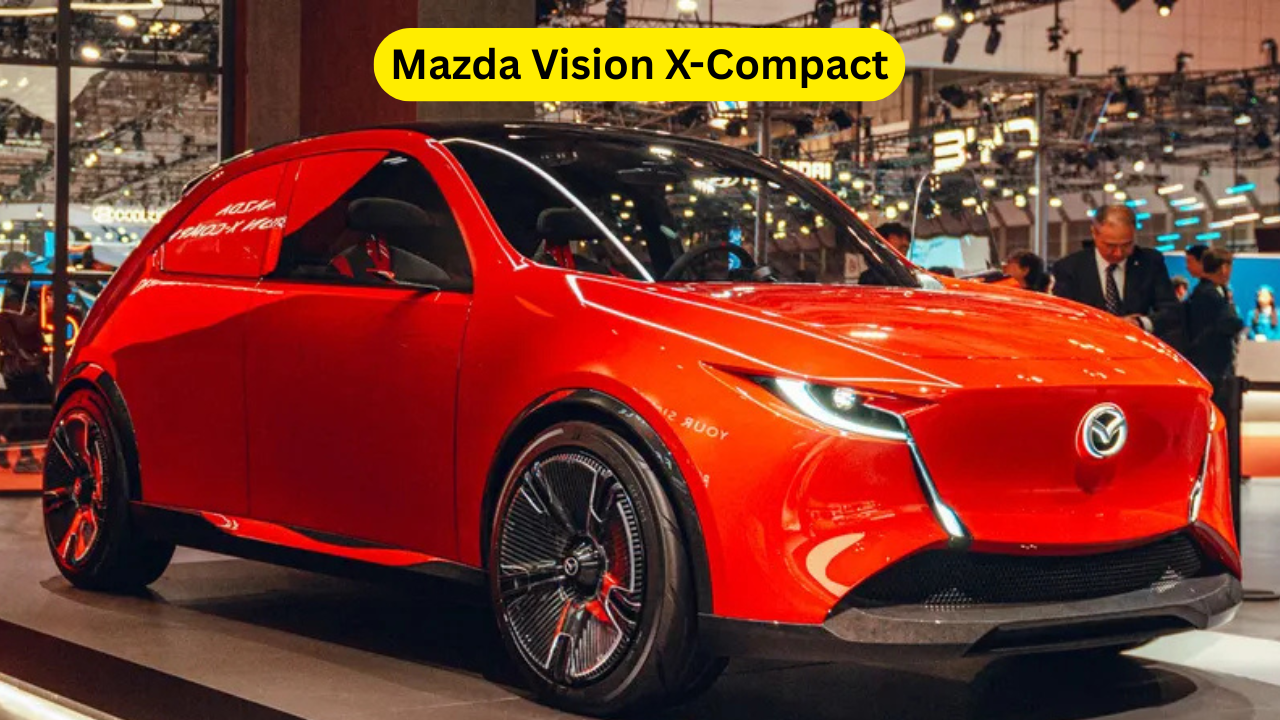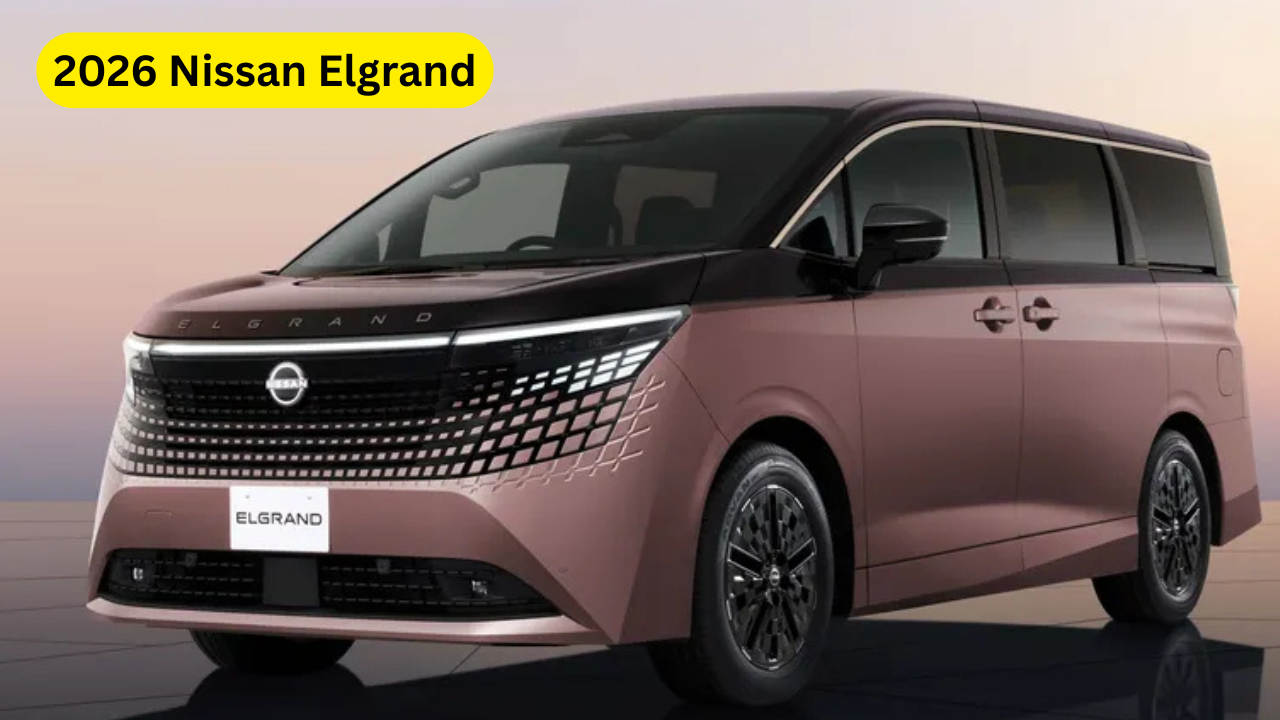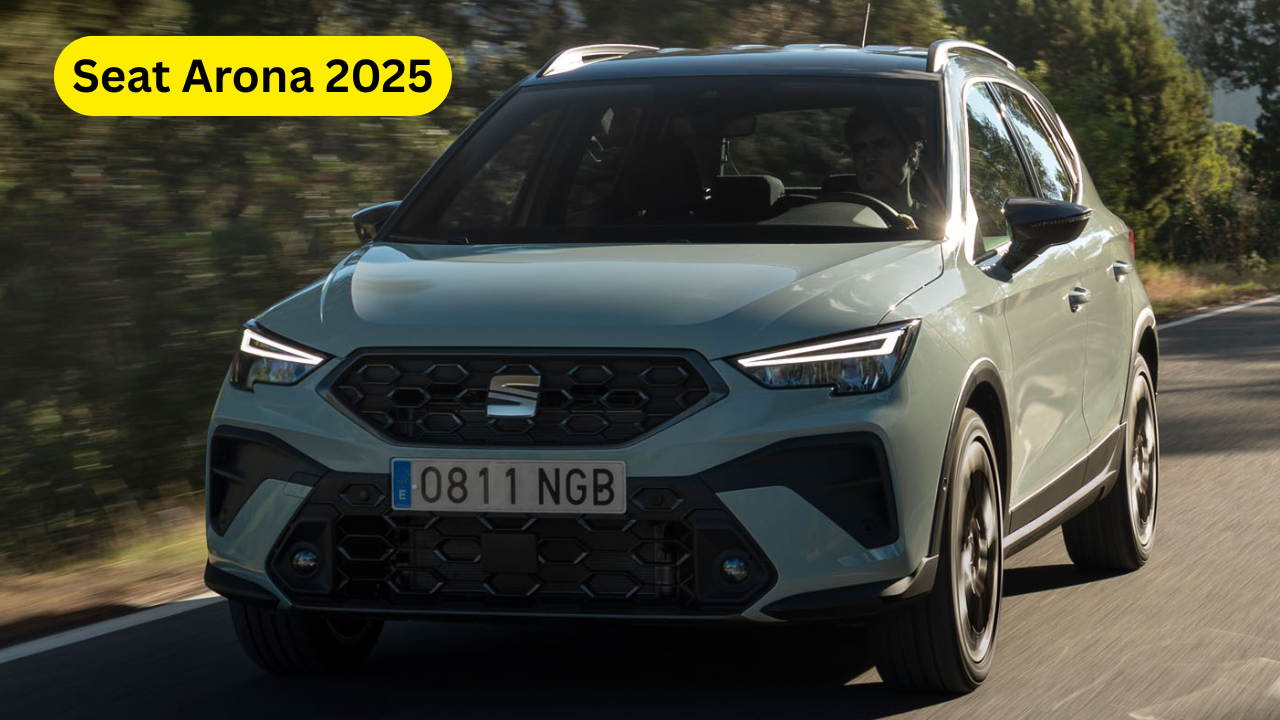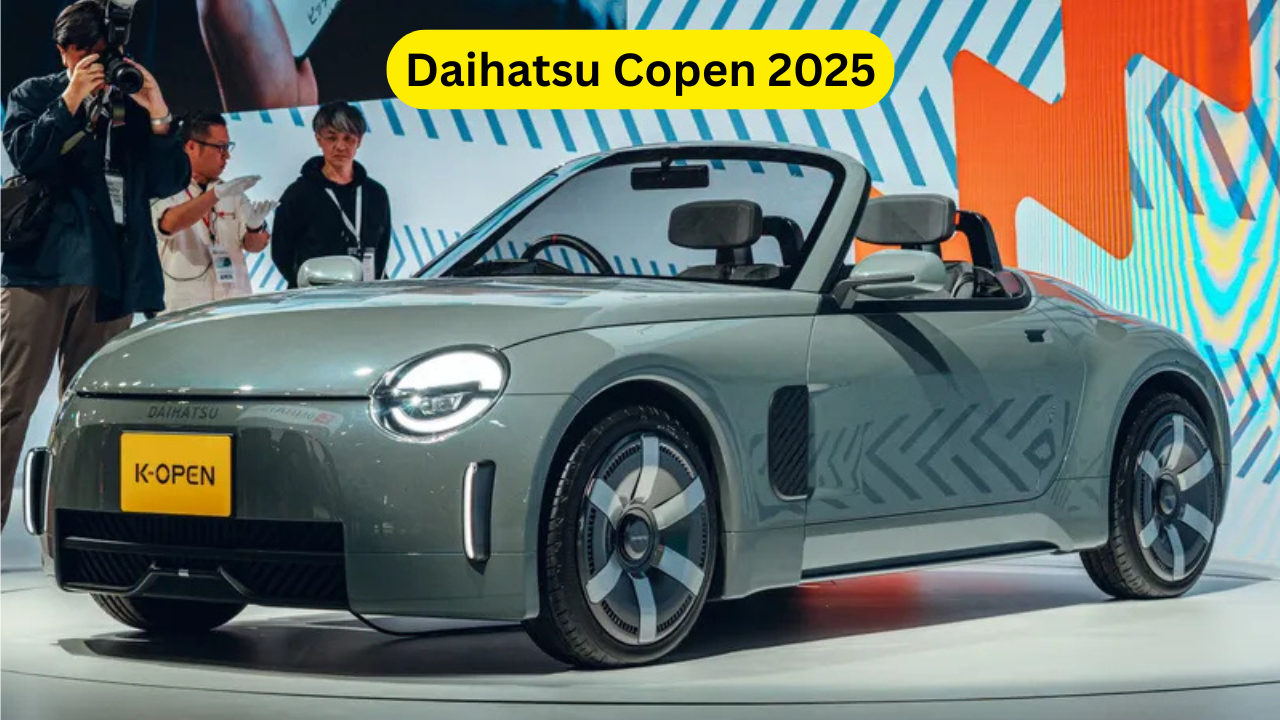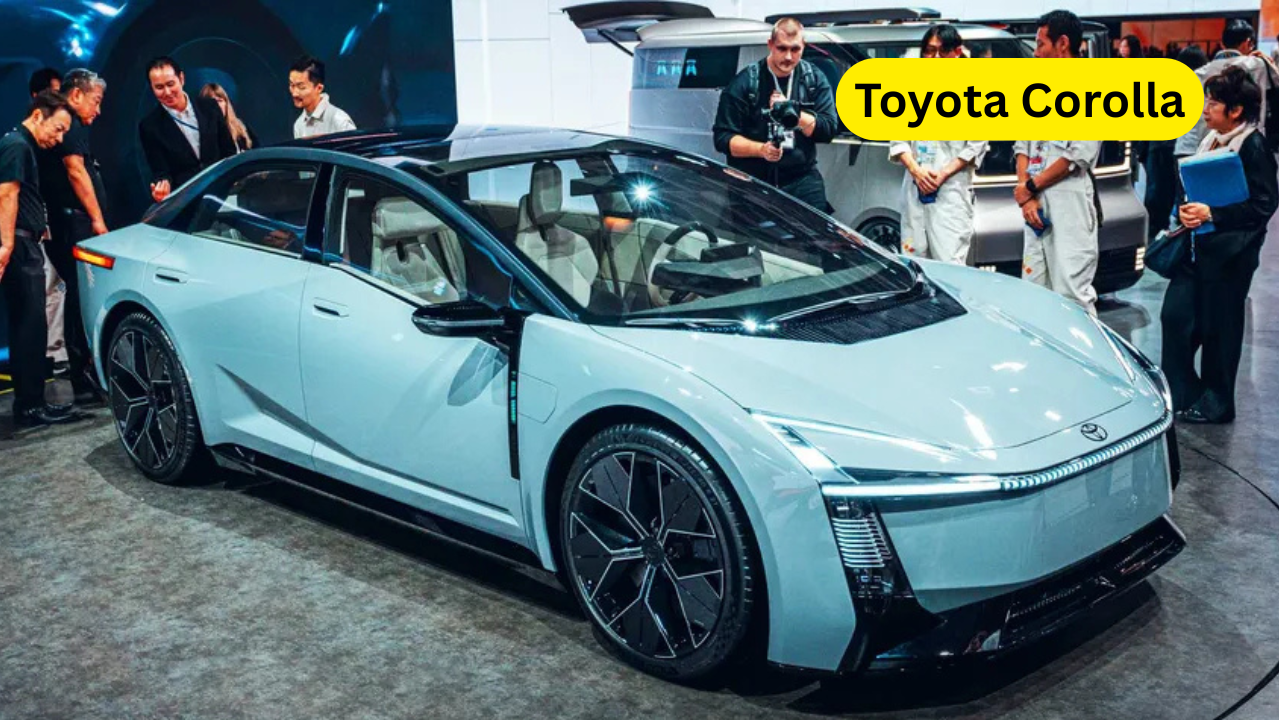Suzuki eVitara: The Suzuki eVitara marks the Japanese automaker’s long-awaited entry into the electric vehicle segment, presenting a compact crossover designed for urban and suburban mobility. With the UK’s Zero Emission Vehicle (ZEV) mandate pressing automakers to electrify their lineups, Suzuki has finally stepped up with an EV that blends practicality, performance, and recognizable Suzuki styling. Unlike the conventional Vitara, the eVitara stands out as a purpose-built electric vehicle, with subtle nods to its ICE counterpart but an entirely modern electric architecture underneath.
Suzuki has leveraged its partnership with Toyota to develop the eVitara, building on shared expertise in small electric SUVs. While the platform is loosely derived from Suzuki’s internal combustion vehicles, the eVitara’s dimensions and proportions set it apart. At 4,275mm in length, it is slightly longer than the conventional Vitara and competes with rivals like the Ford Puma Gen-E, Renault 4, and potentially the Kia EV3 and Renault Megane E-Tech. The crossover aims to combine Suzuki’s reputation for efficiency and affordability with the practicalities demanded by EV buyers, such as decent range, versatile interior, and accessible driving technology.
The eVitara comes in multiple powertrains, including single and dual-motor configurations with two battery options: a 49kWh battery producing 142bhp and a 61kWh battery producing 172bhp. The dual-motor all-wheel-drive variant adds a 64bhp rear motor, resulting in a total of 181bhp. With ranges of 214 miles for the base model and 266 miles for the long-range variant, the eVitara positions itself comfortably in the competitive small EV segment. While it does not outshine competitors in efficiency, it offers practical driving performance and the brand’s familiar reliability.
Specifications of Suzuki eVitara
| Specification | Details |
|---|---|
| Vehicle Type | Compact Electric Crossover |
| Length | 4,275 mm |
| Width | 1,780 mm |
| Height | 1,590 mm |
| Wheelbase | 2,600 mm |
| Battery Options | 49 kWh / 61 kWh LFP |
| Motor (FWD) | 142 bhp / 172 bhp |
| Motor (AWD Dual-Motor) | 181 bhp (64 bhp rear) |
| Torque | 84 lb-ft increase for AWD |
| Drivetrain | FWD / AWD |
| 0-62 mph | FWD: 0-X sec (not specified), AWD: 1.3 sec faster |
| Range | 214 miles (49 kWh), 266 miles (61 kWh) |
| Charging | AC and DC fast charging supported |
| Seats | 5 |
| Boot Capacity | 244–310 L |
| Infotainment | New touchscreen system, wireless Apple CarPlay & Android Auto |
| Steering | Electric power-assisted |
| Price (UK/Europe) | Not disclosed in provided content |
Features
- Electric Powertrain Options: Single-motor FWD and dual-motor AWD variants for performance and versatility.
- Battery Choices: 49kWh or 61kWh LFP batteries offering 214–266 miles of range.
- Infotainment System: New touchscreen interface with wireless Apple CarPlay and Android Auto.
- Interior Flexibility: Sliding rear bench allows trade-off between rear legroom and boot space.
- Drive Modes & Regeneration: Multiple regen levels and “one-pedal” mode for a customizable driving experience.
- Safety & Assistance: Lane keeping assistance, overspeed warning, and standard braking aids.
Performance
The Suzuki eVitara delivers lively and predictable performance for a compact EV. The single-motor 61kWh model offers 172bhp, ensuring quick acceleration and competent motorway performance. The AWD dual-motor variant only adds 9bhp, but the torque increase of 84 lb-ft improves traction and reduces 0-62mph times by 1.3 seconds. Driveability is smooth, with a progressive accelerator and firm, responsive by-wire braking. However, performance does taper slightly at motorway speeds with lower battery charge—a minor compromise compared with modern EV standards.
Design
The eVitara has a contemporary SUV design with clean lines and a compact, urban-friendly footprint. While it retains Suzuki’s familiar styling cues, it introduces a slightly longer body and a more dynamic stance than its ICE counterpart. Front and rear lighting elements are LED, and the overall aesthetic balances sportiness and practicality. The interior design is functional with soft-touch materials in key areas, though glossy black trims are prone to scratches.
Price Details
Pricing information for the Suzuki eVitara has not been officially disclosed in the provided material. However, it is expected to be positioned competitively against other small electric SUVs such as the Ford Puma Gen-E, Renault 4, Kia EV3, and Peugeot e2008.
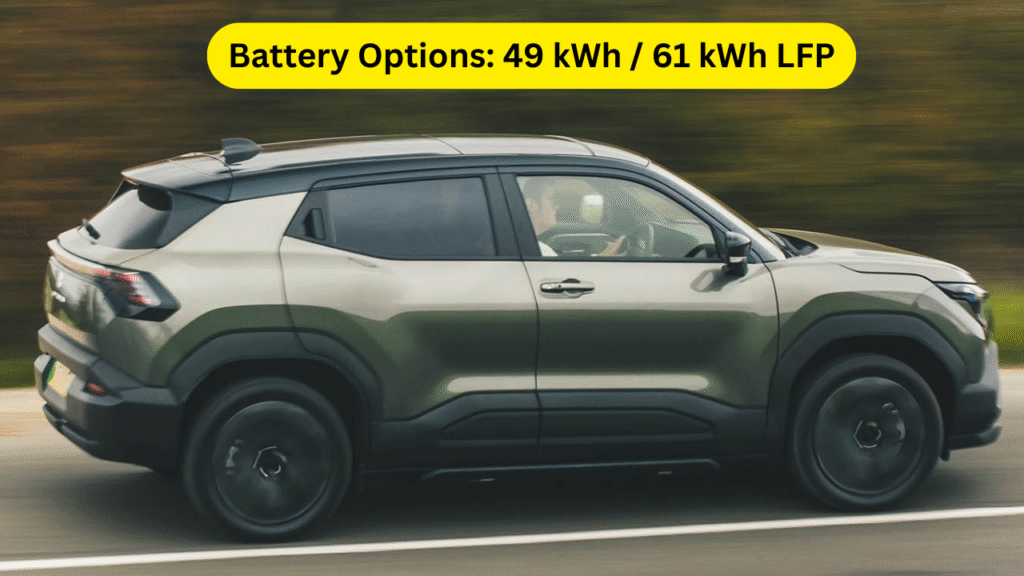
Interior
The eVitara’s interior is practical and adjustable. The wide range of seat adjustments improves driver comfort, and storage solutions include door bins, cupholders, and a wireless charging pad. Rear seat flexibility is achieved via a sliding bench, allowing trade-offs between passenger legroom and boot capacity (244–310 L). Overall, the cabin is functional, though slightly narrower than some competitors.
Exterior
The eVitara maintains Suzuki’s SUV DNA with clean, muscular proportions and compact dimensions. The wheel arches are subtly flared, the roofline gently slopes towards the rear, and the overall styling emphasizes urban sophistication. Lighting elements are fully LED, and the boot lid integrates seamlessly with the compact hatch design.
Launch Date
The Suzuki eVitara is expected to launch in 2025, bringing Suzuki into the electric vehicle market. Availability details in specific regions will follow closer to the launch date.
Other Details
- Drive Modes: Multiple regen settings and one-pedal mode for a customizable driving experience.
- Connectivity: Wireless Apple CarPlay and Android Auto integrated with a new touchscreen.
- Practicality: Sliding rear seats improve cabin flexibility but reduce maximum boot capacity.
- Competition: Ford Puma Gen-E, Renault 4, Kia EV3, Peugeot e2008.
Also read: Triumph Speed Triple RX Launched in India: Only 5 Units, Priced at ₹23.07 Lakh (Ex-Showroom)
Conclusion
The Suzuki eVitara represents a significant step for Suzuki, delivering a compact EV that balances practicality, performance, and brand familiarity. While not revolutionary in design, the eVitara offers a credible alternative for buyers seeking a small, urban-friendly electric SUV with optional AWD.
Performance is competent across its variants, with the 61kWh FWD model providing enough acceleration for everyday use, and the dual-motor AWD model enhancing traction and torque for spirited driving. The slightly lower efficiency compared to rivals is a trade-off for higher power output and all-wheel-drive capability.
Inside, the eVitara offers functional storage solutions, adjustable seating, and an attractive albeit not premium cabin. However, the infotainment system is a notable weak point, with laggy touch responses that affect usability for climate and vehicle controls.
Overall, the Suzuki eVitara is a practical, well-rounded entry into the EV segment. While efficiency and some tech refinements could improve, it gives Suzuki a foothold in the growing small electric SUV market, offering both urban practicality and spirited performance.
FAQ Of Suzuki eVitara
1. What are the battery options for the Suzuki eVitara?
The eVitara comes with two lithium-iron-phosphate (LFP) battery options: a 49kWh battery producing 142bhp and a larger 61kWh battery producing 172bhp. Both offer practical ranges of 214 miles and 266 miles, respectively, making them suitable for daily commuting and moderate weekend trips.
2. Does the eVitara offer all-wheel drive?
Yes, the dual-motor eVitara includes a 64bhp rear motor for all-wheel-drive capability, increasing total power to 181bhp. This variant delivers enhanced torque, improves traction, and reduces the 0-62mph time by 1.3 seconds compared to the FWD version.
3. How practical is the Suzuki eVitara’s interior?
The cabin is flexible, with a sliding rear bench allowing passengers to trade off between legroom and boot space (244–310 liters). Storage is decent, with door bins, cupholders, and a wireless charging pad, though rear space is slightly tighter compared with slightly larger competitors.
4. How is the eVitara’s infotainment system?
The eVitara introduces a new touchscreen system compatible with wireless Apple CarPlay and Android Auto. While visually attractive and logically organized, it is noticeably laggy. Critical functions like adjusting climate controls or toggling safety systems require multiple taps, which can be frustrating during driving.
5. How does the eVitara perform compared to other small EVs?
With up to 172bhp in the FWD model and 181bhp in the AWD variant, the eVitara offers lively acceleration and good motorway stability. While it may lose some performance at lower battery states, it generally delivers a predictable, progressive driving experience. It is quicker than comparable Stellantis EVs like the Jeep Avenger and Peugeot e2008, with sufficient driveability for daily and recreational use.
